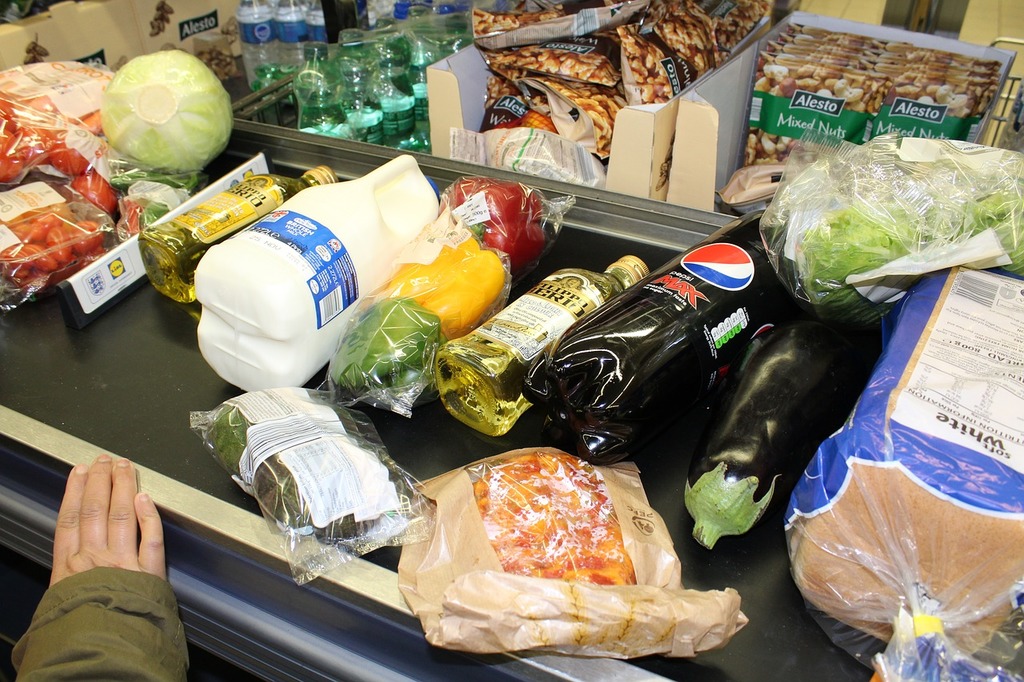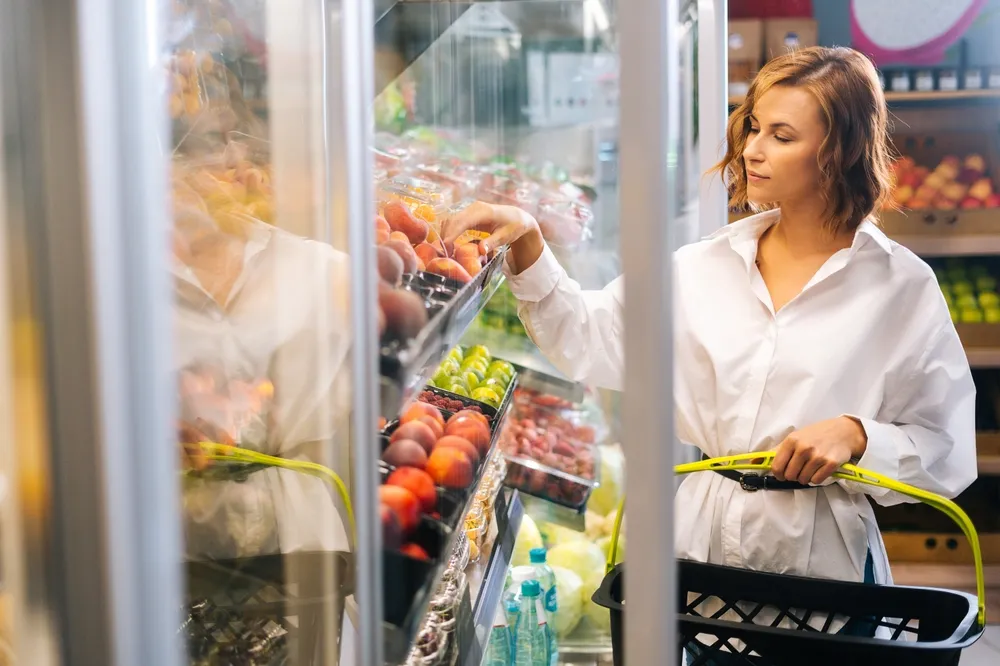When you’re grocery shopping, you probably expect to find the essentials you need without feeling like you’re breaking the bank. However, in some parts of the U.S., grocery prices are soaring to unprecedented levels. It’s not just the result of temporary supply chain hiccups either; there are complex factors at play that are impacting people’s wallets. Let’s take a closer look at 13 states where grocery prices have spiraled out of control, leaving people seeking new strategies to keep their budgets intact without sacrificing their favorite foods.
1. Hawaii

You might not be surprised to hear that Hawaii tops this list, given its remote location and reliance on imports, which naturally leads to higher prices. Shipping costs are significant, and that affects everything from fresh produce to packaged goods. According to James Cook, an economist at the Hawaii Economic Research Organization, prices can be as much as 50% higher than on the mainland due to these transportation fees. Many people in Hawaii have adapted by growing their own fruits and vegetables to offset this financial burden. Still, not everyone has the land or resources to do so, so the high costs remain a prevalent issue.
Beyond shipping costs, Hawaii’s tourism industry also plays a role in driving up grocery prices. When tourists flock to the islands, they increase demand, which causes prices to rise further. Restaurants also compete for local produce and other food items, which can lead to shortages and, subsequently, price hikes. However, this isn’t just a problem for tourists; locals feel the pinch too. Many people are forced to make difficult choices about what to buy, often sacrificing quality or quantity to stay within budget.
2. Alaska

Alaska, much like Hawaii, faces the challenge of geographical isolation. The state relies heavily on imports, which means prices are often higher than in the continental U.S. Harsh weather conditions can also cause disruptions in supply chains, leading to additional costs that are passed down to shoppers. Alaska has seen a rise in community-supported agriculture as people seek more affordable ways to access fresh produce. However, this solution isn’t available everywhere, and remote areas still struggle with exorbitant prices.
The cost of living in Alaska is inherently high, and grocery prices are a significant part of that equation. While some residents can partake in subsistence living by hunting and fishing, this isn’t a viable option for everyone. Urban areas tend to have better access to grocery stores, but rural regions often face steep prices and limited selection. People in these areas sometimes have to travel long distances just to stock up on essentials. This added travel cost further compounds the financial burden on Alaskan residents.
3. California

California, despite being an agricultural powerhouse, is not immune to skyrocketing grocery prices. The state’s ongoing drought has had a profound impact on crop yields, driving up the cost of produce. According to a report by the California Institute for Water Resources, water scarcity continues to threaten the agricultural sector, which in turn affects grocery shelves. This issue is compounded by the high living costs in urban areas like Los Angeles and San Francisco, where people are already feeling the pinch. As a result, many are turning to farmers’ markets and community gardens to find more affordable options.
The state’s diverse population means that demand for a variety of foods is high, but not all items are readily available or affordable. Imported goods face tariffs and transportation costs, which inflate prices further. Grocery stores in wealthier neighborhoods often carry specialty items that have a premium attached to them. Meanwhile, food deserts in lower-income areas leave residents with limited access to affordable and healthy food options. For many Californians, balancing the desire for healthy eating with budget constraints remains a daily challenge.
4. New York

Living in New York often comes with the territory of high costs, and groceries are no exception. Urban areas like Manhattan are known for their pricey grocery stores, where convenience comes at a steep price. Rent for store locations is high, and these costs trickle down to the consumers. For many people, this means limited options unless they’re willing to travel to less expensive boroughs or neighborhoods. Even then, the overall cost of living in the state makes grocery shopping an increasingly expensive endeavor.
New York’s fluctuating climate also impacts the availability and price of local produce. Harsh winters can lead to poor crop yields, resulting in increased reliance on imports. This situation drives up prices and limits the variety available on store shelves. Food deserts are a notable issue in some areas, where residents have to rely on fast food and convenience stores for their meals. For New Yorkers, finding affordable and healthy food options often requires careful planning and strategizing.
5. Massachusetts

Massachusetts might not immediately come to mind when thinking about high grocery prices, but the state has its unique challenges. The local food economy is affected by high land costs, which drive up prices for locally sourced goods. A study by the Massachusetts Food Policy Council highlights how real estate prices impact small farms, forcing them to either increase their prices or close down. This situation, coupled with the high cost of living, makes grocery shopping a costly activity for many residents. For those in urban areas, the convenience of nearby stores often means paying a premium.
In addition to land costs, Massachusetts faces seasonal price fluctuations that affect the cost of fresh produce. During the winter months, local options dwindle, leading to increased reliance on imports. This change causes prices to spike and makes it harder for people to find affordable, high-quality produce. Many residents have turned to local cooperatives and farmers’ markets to find more reasonable prices, but these options aren’t available everywhere. For many, keeping grocery costs down involves a balance of careful meal planning and strategic shopping.
6. Connecticut

Connecticut may be a small state, but its grocery prices are disproportionately high. The state’s high cost of living spills over into the food sector, making everyday essentials more expensive. Real estate and property taxes contribute to elevated store rents, which are then passed down to consumers through higher prices. Additionally, Connecticut’s proximity to major urban centers like New York City influences its food prices. Many people find themselves traveling out of state to shop, hoping to find better deals and more variety.
The state’s local agriculture is robust, but it’s not enough to meet all the demand. As a result, a significant portion of food needs to be imported, which adds to the overall cost. Seasonal changes can also impact local crop yields, making fresh produce more expensive at certain times of the year. To mitigate costs, some residents have started community gardening initiatives, but these efforts are relatively small-scale. For many in Connecticut, grocery shopping requires a strategic approach to find the best deals while maintaining quality.
7. New Jersey

New Jersey, known for its proximity to bustling cities, also experiences elevated grocery prices. The state’s dense population and high demand for food contribute to this issue. Additionally, the Garden State’s agricultural sector faces challenges such as rising land prices and urban sprawl, which impact local food production. As explained by agricultural economist Jennifer Smith from Rutgers University, these factors have led to increased reliance on imports, driving prices higher. Many New Jerseyans are turning to local farmers’ markets in search of more affordable and fresh produce.
The state’s diverse culinary preferences and high demand for specialty items also impact grocery prices. Imported goods, subjected to tariffs and shipping costs, add to the overall expense. Urban areas, in particular, see premium prices due to convenience and accessibility. Food deserts remain a concern in some regions, limiting access to affordable and nutritious options for many residents. New Jerseyans are increasingly looking for creative solutions, such as co-op buying and community-supported agriculture, to mitigate the impact of high grocery prices.
8. Illinois

Illinois, with its mix of urban and rural areas, faces unique challenges in keeping grocery prices in check. Chicago, being a major metropolitan hub, experiences higher prices due to real estate and logistical costs. These expenses are reflected in the cost of groceries, especially in more affluent neighborhoods. Residents often find that convenience comes at a premium, prompting them to explore markets and stores outside the city for better deals. This disparity highlights the varying accessibility to affordable food across different areas of the state.
Rural parts of Illinois, while benefiting from local agriculture, still face their set of challenges. Distribution costs and weather conditions can impact the availability and pricing of fresh produce. Seasonal variations can cause fluctuations in prices, making it difficult to maintain a consistent food budget. Many people in rural areas rely on community networks and local farmers to access more affordable options. For Illinois residents, balancing high grocery costs with quality and variety remains a persistent struggle.
9. Oregon

In Oregon, the picturesque landscapes and thriving food scene come with a price, especially at the grocery checkout. While the state prides itself on local produce and sustainable farming, these options aren’t always the cheapest. Rising costs of labor and land contribute to higher prices for Oregon-grown goods. People often have to weigh the benefits of supporting local farmers against the constraints of their budgets. In urban areas like Portland, this dilemma is particularly pronounced, where the cost of living is already high.
Weather patterns in Oregon also play a role in influencing grocery prices. The region’s climate can lead to crop failures and reduced yields, which in turn affect the availability and cost of fresh produce. Additionally, transportation costs for imported goods add to the overall expense. To combat high prices, many Oregonians have embraced community-supported agriculture and cooperative markets. These initiatives offer a way to access fresh produce at more reasonable rates, but they’re not a catch-all solution for everyone.
10. Washington

Washington State, with its lush landscapes and vibrant cities, faces the challenge of high grocery prices. The cost of living in urban areas like Seattle influences the price of everyday essentials. Real estate values and taxes contribute to elevated store rents, which directly impact food prices. As a result, many people find themselves paying premium prices for convenience and proximity. To manage expenses, some residents venture to nearby towns or use online grocery services for better deals.
The state’s agriculture is diverse, yet not immune to the effects of climate change and economic pressures. Unpredictable weather conditions can impact crop yields, causing fluctuations in prices. Moreover, transportation costs for imported goods add to the overall grocery bill. Some Washingtonians have taken to urban gardening and community-supported agriculture as a means to access more affordable and fresh produce. However, these solutions are more feasible for those with the space and resources to participate.
11. Vermont

Vermont, known for its charming landscapes and artisanal foods, also contends with high grocery prices. The state’s commitment to supporting local agriculture is admirable, but it often translates to higher prices for consumers. Small-scale farms and organic practices contribute to the increased cost of goods. While many residents value the quality and ethics of local produce, it can strain their budgets over time. This challenge is more acute in urban centers like Burlington, where living costs are already elevated.
The state’s harsh winters also affect grocery prices, as local produce becomes scarce and reliance on imports increases. Transporting goods into the state adds additional costs, which are reflected in the final price. To combat this, some Vermont residents have adopted community-supported agriculture and local co-ops. These initiatives help provide more affordable options, but they aren’t available to everyone. For many Vermonters, navigating high grocery costs involves a careful balance of supporting local farmers and staying within budget.
12. Maryland

Maryland, with its coastal charm and proximity to major cities, faces challenges in keeping grocery prices manageable. The state’s diverse population and culinary demands contribute to high food prices. Urban areas, such as Baltimore, see premium prices due to convenience and accessibility. Many people find themselves exploring suburban markets or neighboring states to find more affordable options. This quest for better deals highlights the financial strain that grocery shopping can place on Maryland residents.
The state’s agricultural sector, while robust, isn’t immune to the challenges of rising land costs and urbanization. These pressures drive up the cost of locally sourced goods, making them less accessible to many people. Additionally, seasonal changes can affect the availability and pricing of fresh produce. To counter these challenges, some residents turn to local farmers’ markets and cooperative efforts. However, accessing these options requires time and effort, which not everyone can afford.
13. Florida

Florida’s warm climate and diverse population create a unique environment for grocery pricing challenges. The state’s reliance on imports for certain goods, particularly during hurricane season, affects prices significantly. Additionally, the tourism industry drives up demand, leading to increased prices in popular areas. People living in tourist hubs often face higher grocery bills than those in less frequented areas. To cope, some Floridians travel to less commercialized towns to find better prices and more variety.
The agricultural sector in Florida, while extensive, still contends with issues such as land development and climate change. These factors can lead to reduced crop yields and increased costs for locally grown produce. Seasonal variations play a role as well, influencing the availability and pricing of fresh foods. Community-supported agriculture and local markets offer some relief, but they’re not a complete solution. For many Floridians, managing high grocery costs requires creativity, planning, and a willingness to explore various shopping options.
This article is for informational purposes only and should not be construed as financial advice. Consult a financial professional before making investment or other financial decisions. The author and publisher make no warranties of any kind.








